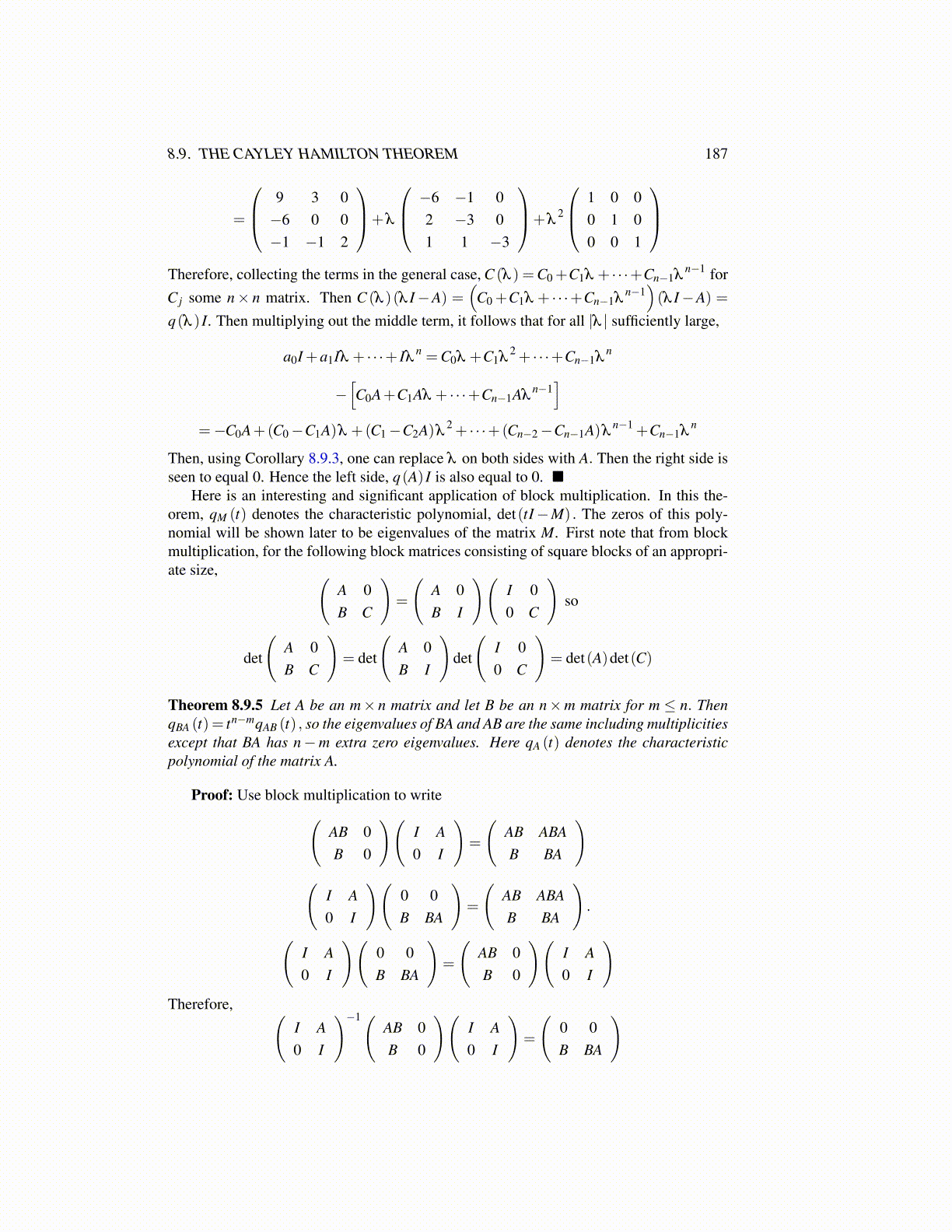
8.9. THE CAYLEY HAMILTON THEOREM 187
=
9 3 0−6 0 0−1 −1 2
+λ
−6 −1 02 −3 01 1 −3
+λ2
1 0 00 1 00 0 1
Therefore, collecting the terms in the general case, C (λ ) =C0 +C1λ + · · ·+Cn−1λ
n−1 forC j some n× n matrix. Then C (λ )(λ I−A) =
(C0 +C1λ + · · ·+Cn−1λ
n−1)(λ I−A) =
q(λ ) I. Then multiplying out the middle term, it follows that for all |λ | sufficiently large,
a0I +a1Iλ + · · ·+ Iλn =C0λ +C1λ
2 + · · ·+Cn−1λn
−[C0A+C1Aλ + · · ·+Cn−1Aλ
n−1]
=−C0A+(C0−C1A)λ +(C1−C2A)λ2 + · · ·+(Cn−2−Cn−1A)λ
n−1 +Cn−1λn
Then, using Corollary 8.9.3, one can replace λ on both sides with A. Then the right side isseen to equal 0. Hence the left side, q(A) I is also equal to 0. ■
Here is an interesting and significant application of block multiplication. In this the-orem, qM (t) denotes the characteristic polynomial, det(tI−M) . The zeros of this poly-nomial will be shown later to be eigenvalues of the matrix M. First note that from blockmultiplication, for the following block matrices consisting of square blocks of an appropri-ate size, (
A 0B C
)=
(A 0B I
)(I 00 C
)so
det
(A 0B C
)= det
(A 0B I
)det
(I 00 C
)= det(A)det(C)
Theorem 8.9.5 Let A be an m× n matrix and let B be an n×m matrix for m ≤ n. ThenqBA (t) = tn−mqAB (t) , so the eigenvalues of BA and AB are the same including multiplicitiesexcept that BA has n−m extra zero eigenvalues. Here qA (t) denotes the characteristicpolynomial of the matrix A.
Proof: Use block multiplication to write(AB 0B 0
)(I A0 I
)=
(AB ABAB BA
)(
I A0 I
)(0 0B BA
)=
(AB ABAB BA
).
(I A0 I
)(0 0B BA
)=
(AB 0B 0
)(I A0 I
)Therefore, (
I A0 I
)−1(AB 0B 0
)(I A0 I
)=
(0 0B BA
)